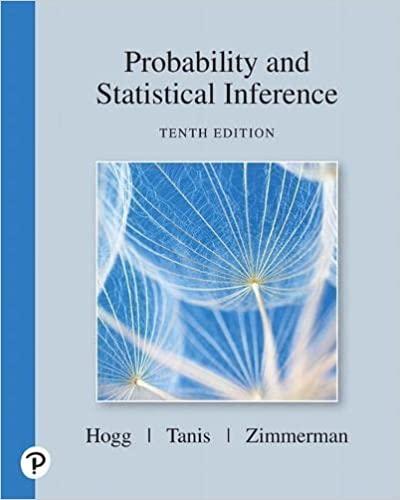Question
Problem B ( # 21 - 40 ) A young doctoral student makes an observation that men and women under 30 years of age, seem
Problem B
( # 21 - 40 )
A young doctoral student makes an observation that men and women under 30 years of age, seem to have different sleep habits. She believes that on weekends, women (Pop1) sleep more hours per night than men (Pop2). Both populations are assumed to be Normal Distributions with unknown but, unequal standard deviations.
She decides to test her hypothesis about sleep habits of women (Pop1) and men (Pop2). She surveys a total of 35 women and 30 men about the mean number of hours she or he, sleeps on weekends. Table 2 below displays the results of that survey>
To help this young research you are to respond to each question below and all numerical answers should be rounded off to 2 decimal places.
# Question
21 State the Null Hypothesis with Symbols
22 State the Alternate Hypothesis with Symbols
23 Is this a non-directional or directional test?
| 24 | Choose the letter of the graph in table 1 on page 1 that best displays this test rejection region. |
| 25 | What is the best description of this Sampling distribution? Pick the correct choice below: a) Simple Normal Distribution b) Simple t Distribution c) Differences of two means using z scores d) Differences of two means using t scores |
| 26 | What is the value of the mean for this sampling distribution in this example? |
| 27 | Compute the differences between the given sample means. |
| 28 | Using the Welch's test, what is the value of theEstimate of the Standard Error of the Differences of Between the Two Means? (Note: This answer is what we use for the standard deviation of our sampling distribution.) |
| 29 | For this example. do we use the z score or t score table to find the critical cutoff score(s)? |
| 30 | If we need degrees of freedom, what is its value? |
| 31 | If we use = 5%, what is the value of thecritical cutoff score(s)? |
| 32 | Using the critical score(s)for = 5%, whatis theDecision Rule? Do NOT state the decision yet. |
| 33 | If we use= 1%, what is the value of the critical cutoff score(s)? |
| 34 | Using the critical score(s) for= 1%, what is theDecision Rule? Do NOT state the decision yet. |
35 Now Compute the value of the test statistic.
| 36 | If we use = 5%, what is our final decision?Reject Ho or Do NOT Reject Ho? |
| 37 | If we use = 1%, what is our final decision? Reject Ho or Do Not Reject Ho |
38 What is the p- value for our test statistic?
| 39 | If we use = 5%, What would be our finaldecision using p-values? Reject Ho or Do Not Reject Ho |
| 40 | If we use = 1%, What would be our finaldecision using p- values? Reject Ho or Do Not Reject Ho |
Step by Step Solution
There are 3 Steps involved in it
Step: 1

Get Instant Access to Expert-Tailored Solutions
See step-by-step solutions with expert insights and AI powered tools for academic success
Step: 2

Step: 3

Ace Your Homework with AI
Get the answers you need in no time with our AI-driven, step-by-step assistance
Get Started


